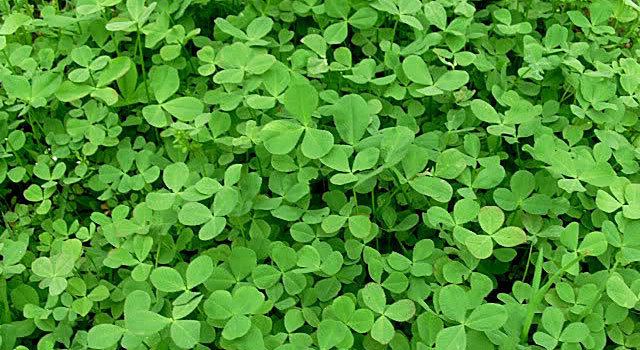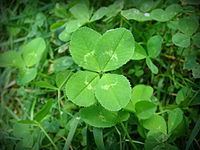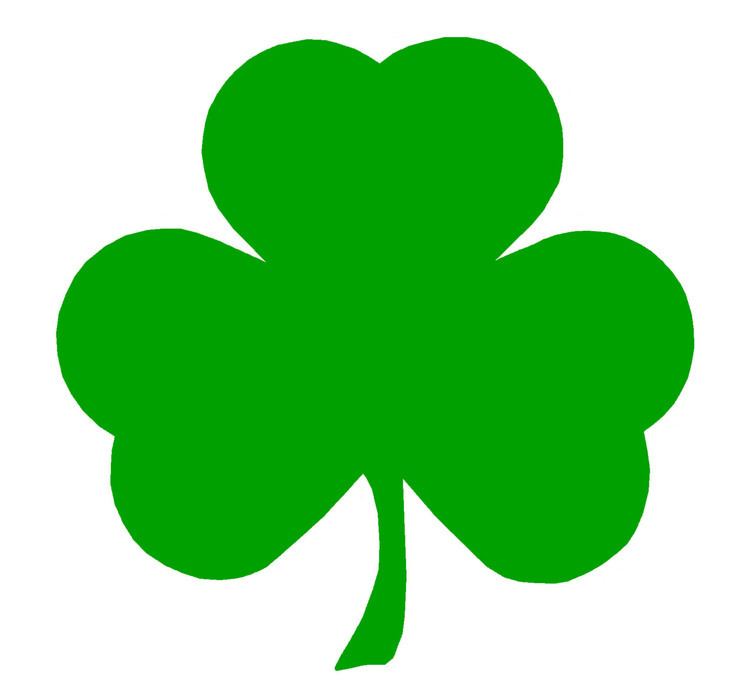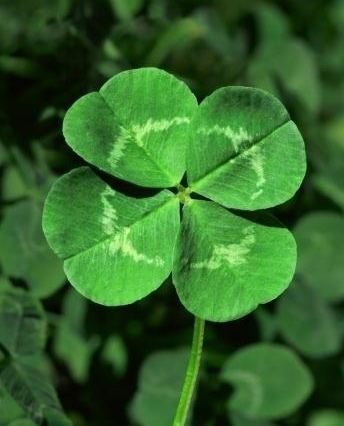Species See text Higher classification Faboideae | Scientific name Trifolium Rank Genus | |
 | ||
Lower classifications | ||
How science can help you find a 4 leaf clover instant egghead 64
Clover or trefoil are common names for plants of the genus Trifolium (Latin, tres "three" + folium "leaf"), consisting of about 300 species of plants in the leguminous pea family Fabaceae. The genus has a cosmopolitan distribution; the highest diversity is found in the temperate Northern Hemisphere, but many species also occur in South America and Africa, including at high altitudes on mountains in the tropics. They are small annual, biennial, or short-lived perennial herbaceous plants. Clover can be evergreen. The leaves are trifoliate (rarely quatrefoiled, cinquefoil, or septfoil), with stipules adnate to the leaf-stalk, and heads or dense spikes of small red, purple, white, or yellow flowers; the small, few-seeded pods are enclosed in the calyx. Other closely related genera often called clovers include Melilotus (sweet clover) and Medicago (alfalfa or Calvary clover).
Contents
- How science can help you find a 4 leaf clover instant egghead 64
- Poor man way to plant clover to help saveourbees will it work
- Cultivation
- Symbolism
- Selected species
- References

Poor man way to plant clover to help saveourbees will it work
Cultivation

Several species of clover are extensively cultivated as fodder plants. The most widely cultivated clovers are white clover Trifolium repens and red clover Trifolium pratense. Clover, either sown alone or in mixture with ryegrass, has for a long time formed a staple crop for silaging, for several reasons: it grows freely, shooting up again after repeated mowings; it produces an abundant crop; it is palatable to and nutritious for livestock; it fixes nitrogen, reducing the need for synthetic fertilizers; it grows in a great range of soils and climates; and it is appropriate for either pasturage or green composting.
In many areas, particularly on acidic soil, clover is short-lived because of a combination of insect pests, diseases and nutrient balance; this is known as "clover sickness". When crop rotations are managed so that clover does not recur at intervals shorter than eight years, it grows with much of its pristine vigor.

Clover sickness in more recent times may also be linked to pollinator decline; clovers are most efficiently pollinated by bumblebees, which have declined as a result of agricultural intensification. Honeybees can also pollinate clover, and beekeepers are often in heavy demand from farmers with clover pastures. Farmers reap the benefits of increased reseeding that occurs with increased bee activity, which means that future clover yields remain abundant. Beekeepers benefit from the clover bloom, as clover is one of the main nectar sources for honeybees.

Trifolium repens, white or Dutch clover, is a perennial abundant in meadows and good pastures. The flowers are white or pinkish, becoming brown and deflexed as the corolla fades. Trifolium hybridum, alsike or Swedish clover, is a perennial which was introduced early in the 19th century and has now become naturalized in Britain. The flowers are white or rosy, and resemble those of the last species. Trifolium medium, meadow or zigzag clover, a perennial with straggling flexuous stems and rose-purple flowers, has potential for interbreeding with T. pratense to produce perennial crop plants.

Other species are: Trifolium arvense, hare's-foot trefoil; found in fields and dry pastures, a soft hairy plant with minute white or pale pink flowers and feathery sepals; Trifolium fragiferum, strawberry clover, with globose, rose-purple heads and swollen calyxes; Trifolium campestre, hop trefoil, on dry pastures and roadsides, the heads of pale yellow flowers suggesting miniature hops; and the somewhat similar Trifolium dubium, common in pastures and roadsides, with smaller heads and small yellow flowers turning dark brown.
Symbolism

Shamrock, the traditional Irish symbol, which according to legend was coined by Saint Patrick for the Holy Trinity, is commonly associated with clover, although alternatively sometimes with the various species within the Oxalis genus, which are also trifoliate.
Clovers occasionally have four leaflets, instead of the usual three. These four-leaf clovers, like other rarities, are considered lucky. Clovers can also have five, six, or more leaflets, but these are rarer. The record for most leaflets is 56, set on 10 May 2009. This beat the "21-leaf clover", a record set in June 2008 by the same discoverer, who had also held the prior Guinness World Record of 18.
A common idiom is "to be (or to live) in clover", meaning to live a carefree life of ease, comfort, or prosperity.
The cloverleaf interchange is named for the resemblance to the leaflets of a (four-leaf) clover when viewed from the air.
Selected species
The genus Trifolium currently has 245 recognized species:
